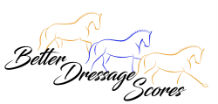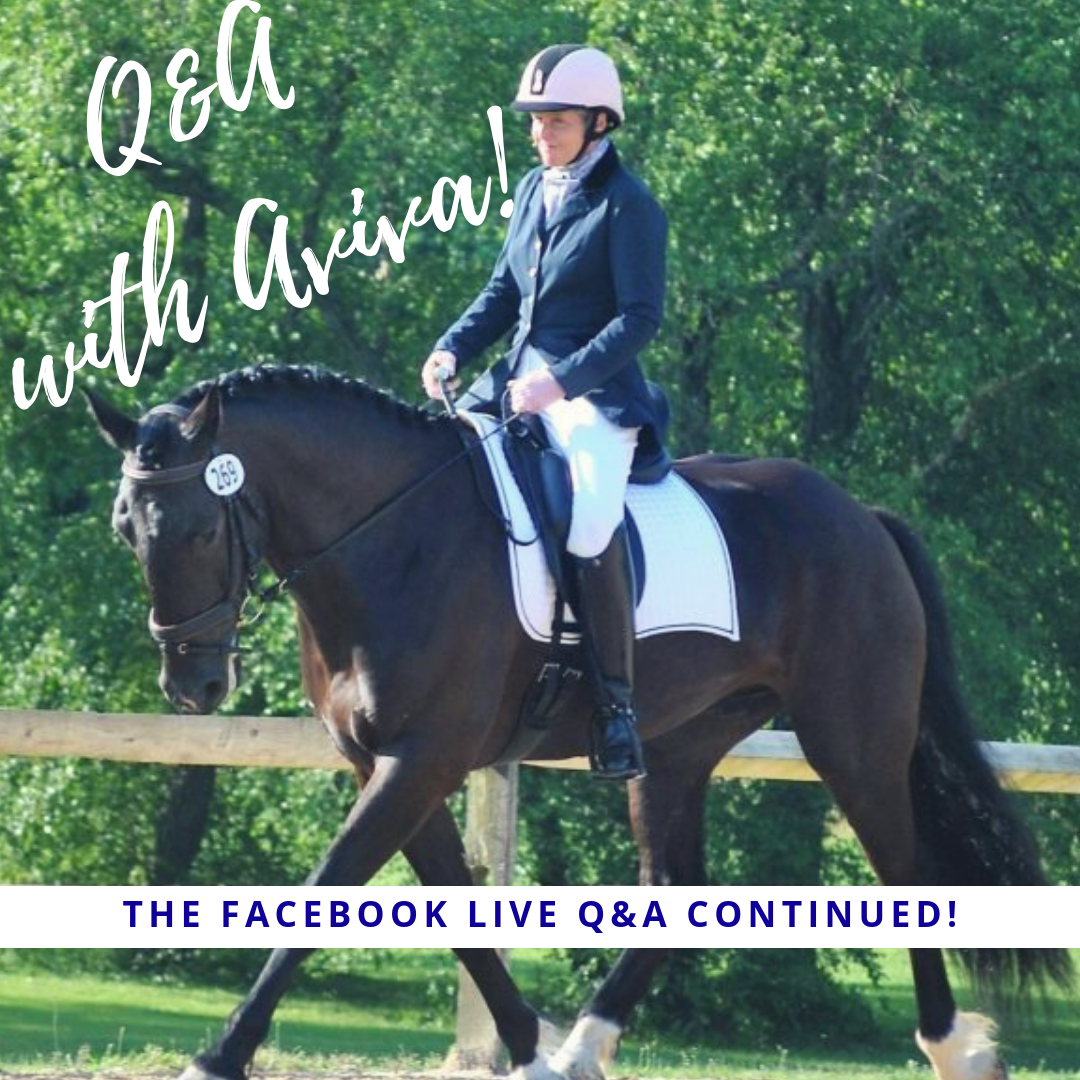Aviva Nebesky, one of our wonderful judges, had a live Q&A session on Facebook with us back in March. After answering many of your questions live, we had a few people comment with some more pressing dressage questions!
While some of them required a short answer, Ashleigh asked: “What are some of your favorite warm up exercises to get your intro level horse relaxed and ready to work?” and Aviva had a lot to say! Here’s her response:
Intro is about preparing the green horse and/or green rider for the show ring and is the preparation for Training Level. If you read the requirements for Training Level dressage you’ll see that the purpose is to develop the basics on the training scale to enable your horse to work his way up the levels correctly.
What are we looking for first?
Rhythm and relaxation is the first step.This means that your horse has 3 correct gaits. Not flashy or fancy – correct. A four beat walk, 2 beat trot, and 3 beat canter. We are looking for a horse that performs these 3 gaits quietly and relaxed through the topline. Intro and Training Level horses are not expected to be “on the bit,” they should be moving freely forward from their hind ends, swinging softly through their backs, and reaching forward and down toward the rider’s hand. An Intro Level horse can be “on the forehand” a little bit while a Training Level horse would be in a level balance.
Having identified what we want, how do we warm up to get it?
If you want your horse warmed up to work, then you need to work the muscles you want correctly. For me, I start with the free walk. I want my horse to walk forward on a long (not loose) rein with a sense of purpose – not ambling along but not rushing either. I ask him to look for my hand a little by making lots of circles and turns and changes of direction so that I get his body supple and make sure he is moving away from my inside leg and going into the outside rein. I check to be sure that my outside leg is on the horse so that the bend I ask for, no matter how slight, is real bend and not a leg yield or falling through the shoulders.
I always like to make sure my half halt is still installed and I do some walk/halt transitions doing nothing but lifting my rib cage and closing my leg to see if my horse is listening to a whisper. I also ask for the transition back to walk with a soft aid making sure that the walk is coming from a hind leg and not from a pull of the shoulder. If my horse is not listening, I do these transitions over and over again on my circles and turns until I feel he is truly on my aids. Sometimes I move my horse a little sideways off my inside leg in the up transition to better prepare him to us his inside hind leg. Sometimes I push my outside leg harder to ask him to step under with the outside hind leg in the downward transitions. Sometimes I bounce a little back and forth from one leg to the other to ask my horse to bring both hind legs under him.
Once I have accomplished what I want…
I go to the trot. But, the trot transition also has to be from a soft aid and needs to come from the hind end. The same exercises above apply to the walk trot walk and to the trot, itself. Lots of circles. Lots of transitions. Lots of patience to get the horse on my aids and doing things in an understanding and relaxed way. I try to achieve harmony with my horses so that the horse and I flow rather than being adversarial about things.
Correct basics make a dressage horse. They might be boring but they are what enable the best riders to do the “tricks” of the upper levels look so easy!
Riding with accuracy – knowing how a 20m circle should FEEL, not just pulling your horse around trying to hit letters in the ring – is huge at all levels. If you don’t have a ring, mark out a circle on the ground or use cones and get the feel for how much bend there is (not much). Practice straight lines and gentle corners. Pick a place where you are riding to make a transition and prepare for it and see if it comes easily or if you need to modify something in your aids.
I know it all sounds boring, but it isn’t! The more you practice things correctly, the easier it gets and the more communication you create with your horse. And, the happier your horse is, the happier you are!!
Good Luck.
To see the full Q&A session, click here. If you have more questions that weren’t covered, comment on the video or send us an email at info@betterdressagescores.com!

